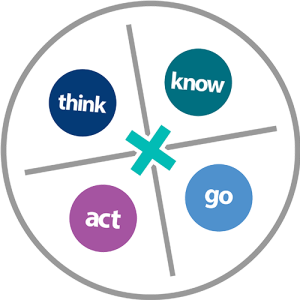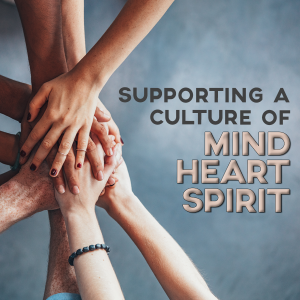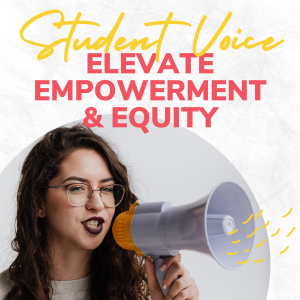Ros s Anderson, senior lead researcher at EPIC, penned an article for Eugene’s Register-Guard about ArtCore, a new arts education program to be implemented in five Lane County Schools, through a partnership between EPIC, Lane Arts Council, the Springfield Public Schools, and others.
s Anderson, senior lead researcher at EPIC, penned an article for Eugene’s Register-Guard about ArtCore, a new arts education program to be implemented in five Lane County Schools, through a partnership between EPIC, Lane Arts Council, the Springfield Public Schools, and others.
[dt_quote type=”pullquote” layout=”left” font_size=”big” animation=”none” size=”1″][A]cross the country, an encouraging legion of educators and leaders is stepping up to reclaim the purpose of education. For many, the arts and creativity are becoming the personalized pivot points of learning across the curriculum.[/dt_quote]
[dt_gap height=”10″ /]
This article originally appeared in the Register Guard but has since been archived: http://registerguard.com/rg/opinion/33189077-78/improve-education-through-arts-and-creativity.html.csp
[dt_gap height=”10″ /]
[dt_divider style=”thin” /]
[dt_gap height=”10″ /]
Improve education through arts and creativity
For decades, discourse about our education system has largely centered on disappointment, blame and distrust. Its not surprising, then, that students become less engaged in school as they age through the system. If they leave school, we call it “dropping out” and blame shortsighted, youthful decision making. But across the country, an encouraging legion of educators and leaders is stepping up to reclaim the purpose of education. For many, the arts and creativity are becoming the personalized pivot points of learning across the curriculum.
Call it arts integration.
It’s an approach that Jenny Mora, a teacher at Kelly Middle School in Eugene, knows something about. Mora is involved with ArtCore ( www.artcorelearning.org ), an arts integration project administered by Lane Arts Council, the Educational Policy Improvement Center and Springfield public schools.
[dt_quote type=”pullquote” layout=”right” font_size=”big” animation=”none” size=”1″]”I believe wholeheartedly in integrating art,” says Mora. “It gives students the opportunity to be creative and to respond and process their learning in a variety of ways, in creative ways. There isn’t so much emphasis on testing and such, but on the exchange of learning. Yes, it’s always more work than you anticipate … and it always grows into something more than you planned for … [but] it’s good work!”[/dt_quote]
Educators are increasingly collaborating to imagine new ways to bring learning to life. Many students who’ve struggled under a “sit and absorb” approach are engaging, excelling and making marked improvements in test-based achievement. As a teaching practice, arts integration begins with the art and science of learning-the right challenge level, personally meaningful discovery, and multiple paths to demonstrate mastery. Throughout history, the arts have been at the core of developing healthy young minds. Art allows understanding, meaning and insight to take unique forms for each individual. The arts motivate and challenge learners to take sensible risks, connect disparate pieces of information, and synthesize new imaginations.
Such thinking builds strong neural pathways that research suggests benefit student performance across multiple subjects areas. The arts use metaphor and analogy to translate knowledge and skills into disciplines from chemistry to social studies to literature. By tapping into the full spectrum of human talents, the arts facilitate deeper thinking and level the playing field.
Integrating the arts across learning promises a bridge to traverse the current plethora of education reforms that haven’t worked. Admittedly, building that bridge will demand hard choices and sacrifice. Sustainable improvements in learning lean on a creative mindset that asks the right questions, takes risks and evaluates choices thoughtfully. Fortunately, new research points us toward those appropriate questions and choices. For example: The Right Brain Initiative in Portland has contributed to make strong gains in math, reading and English proficiency across 49 schools through arts integration training. The Changing Education Through the Arts Program at the Kennedy Center for the Performing Arts in Washington, D.C., has fostered both improved academic proficiency and increased creative thinking.
In Texas, fewer students drop out of high schools that provide learning opportunities in the arts. Other research conveys the same message: the arts engage and sustain a thriving interest for young minds from all backgrounds. Students of all ages are innately driven to learn. Learning models that promote arts-integrated inquiry reconnect students to their intrinsic drive.
Locally, promising examples of arts-integrated learning can be found in ArtCore projects in five middle schools. Only a few months into ArtCore, teachers like Denise Velasco at the Network Charter School in Eugene are already reporting impressive turnarounds. Velasco tells the story of one 13-year-old girl:
[dt_quote type=”blockquote” font_size=”big” animation=”none” background=”plain”]”She’s an extremely visual and tactile learner, and every time I’d try to talk math with her, she really didn’t understand what was going on. But now, through creating art, doing quilting in ArtCore, it’s all clicking. Suddenly, she’s understanding. And she’s no longer afraid to speak up, to participate in class discussion. She’s way more confident,” says Velasco, “because visually, she can see what’s going on. In fact, she says that she enjoys math now.”[/dt_quote]
The education system in this country is thirsty for a dose of creative juice. Chasing the test-based achievement measures of other nations has failed to fill the widening opportunity gaps. If we cultivate the drive to learn as the most coveted outcome for all students, then we refocus attention away from achievement measured in static isolation.
A Sundance Film Festival award-winning education documentary, “Most Likely to Succeed,” underscores the growing need for innovation and creativity to prepare students for the future. A free screening will begin at 6 p.m. June 23 at the WOW Hall, with a panel discussion to follow.
Love of learning fosters insights. And original insights are the artful forces that beget true success and achievement in the real world.
[dt_gap height=”10″ /]
[dt_divider style=”thin” /]
[dt_gap height=”10″ /]
Ross Anderson is the principle researcher at Inflexion in Eugene. Liora Sponko is executive director of the Lane Arts Council.




